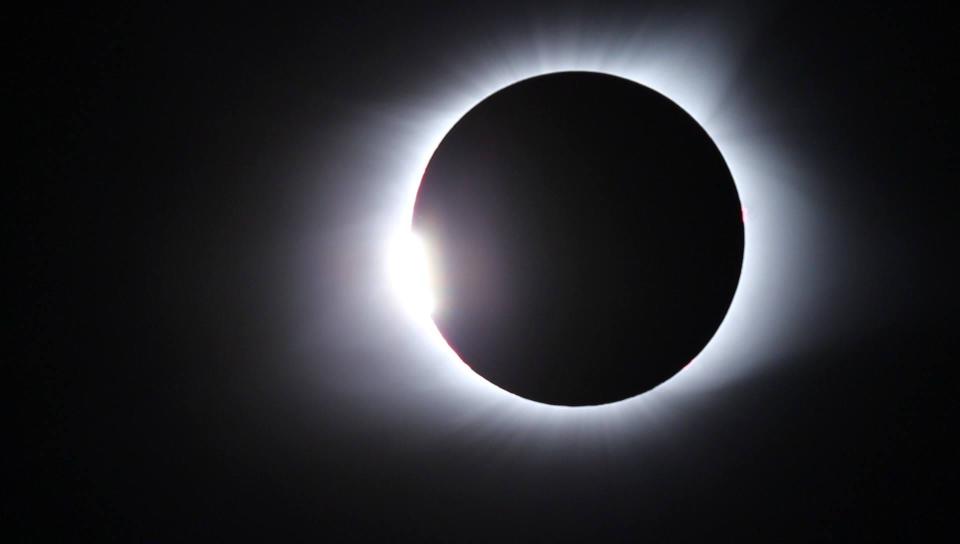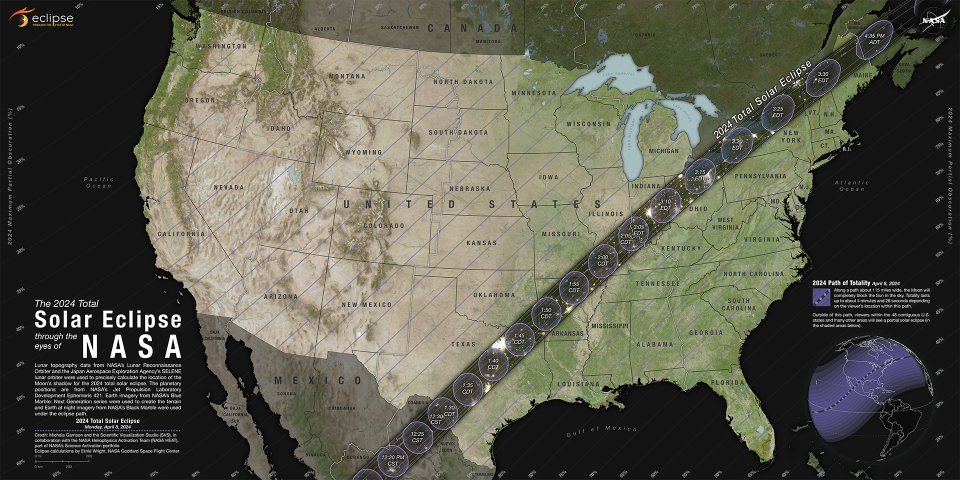No totality for North Carolina during April solar eclipse. Where is the closest to see it?
Get your eclipse shades ready. In less than two months, a total solar eclipse will be visible in 13 states across the U.S.
A total solar eclipse is visible somewhere on Earth approximately every 18 months, according to The Old Farmer's Almanac. The most recent total solar eclipse was in 2017, marking the first to be visible in the contiguous U.S. since 1979. The 2017 eclipse stretched from Oregon to South Carolina, with part of North Carolina getting to experience totality.
This year, the fascinating cosmic event will occur on April 8. However, the path of totality does not cross North Carolina.
Where is the closest place to North Carolina to see the 2024 total solar eclipse?
Unfortunately, North Carolina residents will have to travel a ways to see totality.
From Wilmington, the closet location to view the total solar eclipse is Paducah, Kentucky. This city is approximately 744 miles northwest of Wilmington.
A partial eclipse will begin in Paducah at 12:42 p.m. Central Daylight Time (CDT). Totality begins at 2 p.m. CDT and is expected to last for two minutes, ending at 2:02 p.m. The partial eclipse will end at 3:18 p.m. CDT.
The full solar eclipse will be best viewed at 2:01 p.m. CDT, according to NASA's eclipse map.
A guide to lodging, local events, and viewing options can be found on the Paducah Convention & Visitors Bureau webpage here.
Though, Wilmington residents who can't make the trek to Kentucky are still in luck. Wilmington will experience 70-75% sun coverage at home during the partial eclipse, according to NASA's eclipse map.
SEE MORE: Check out our interactive map.

What is a total solar eclipse?
For a total solar eclipse to occur, the sun, moon, and earth must be in a direct line, according to the National Aeronautics and Space Administration (NASA).
In order to view the total eclipse from earth, you must be in the center of the moon's shadow. People located outside of the moon's inner shadow will only see a partial eclipse.
In a total eclipse, the outer atmosphere of the sun, known as the sun's corona, is visible to viewers as a glowing ring around the moon's silhouette. When the moon passes directly between the earth and the sun, the daytime sky will darken dramatically.
A total solar eclipse is the only eclipse that can be viewed without eclipse glasses, according to NASA. However, this is only applies to when the moon is completely blocking the sun.

More: What's your moon? A guide to the names and dates of the 2024 full moons
More: A once-in-a-lifetime cicada emergence expected in 2024. Will North Carolina be buzzing?
How can you safely watch the eclipse?
If you plan to watch the partial eclipse in Wilmington on Apr. 8, you will definitely want to grab a pair of solar viewing glasses. A list of suppliers for approved eclipse glasses can be found on NASA's webpage here.
Ordinary sunglasses, even those that are very dark, are not suitable for viewing a solar eclipse.
Additionally, the American Academy of Ophthalmology warns viewers to "never look at the uneclipsed or partially eclipsed sun through an unfiltered camera, telescope, binoculars or other similar devices," even if you are wearing eclipse glasses.
If you intend to travel to a location where the total eclipse will be visible, you should only look at the unfiltered total eclipse while the entirety of the sun is covered by the moon.
When is the next total solar eclipse?
The next solar eclipse is expected to occur on Aug. 12, 2026, according to NASA. This eclipse will be visible in the Greenland, Iceland, Spain, Russia, and a small portion of Portugal.
The next time a total solar eclipse will be visible from the contiguous U.S. will be Aug. 23, 2044.
This article originally appeared on Wilmington StarNews: Solar eclipse 2024: Is North Carolina on the path of totality?

